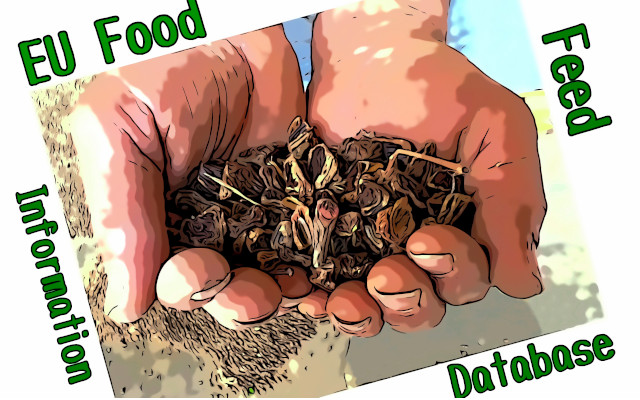The European Commission has published the new ‘EU Food and Feed Information Portal Database,’ which includes a number of registers and information on the rules applied in the EU to ingredients, additives and flavorings for use in food and feed preparations, as well as nutrition and health claims related to food. (1)
The information in the database provides useful guidance, but has no legal value. The actual compliance of food and feed produced and/or imported and/or marketed in the EU must therefore be verified on the updated texts of the regulations referred to, as published in the Official Journal.
1) EU Food and Feed Information Portal Database
The EU Food and Feed Information Portal Database summarizes the rules applied to three macro-categories of substances subject to special EU rules, in addition to the discipline of health claims:
1) feed additives,
2) Food additives,
3) food flavorings,
4) health claims.
The system allows users to consult, in each area, regulatory references of interest and documents published by the European Commission and/or EFSA on related topics, where available.
Inclusion of new additives, flavorings or health claims is subject to special authorization procedures, to be submitted to the Commission through the European Submission Food ChainPlatform (ESFC Platform). (2)
2) Feed additives
The new database updates and replaces the former ‘Community Register of Feed Additives’ (3), which the Commission had already published in ways that were not as easy to read. The registry is now structured as follows.
2.1) Categories/functional groups of feed additives.
Feed additives are divided into 5 categories (i.e., technological, organoleptic, nutritional, zootechnical, coccidiostatic and histomonostatic additives). The first four categories are divided into groups, with their functions and EU authorization codes.
Detailed information in relation to each of the feed additives authorized in the EU, including the animal species to which they may be administered, is readily accessible through selection of the relevant references.
2.2) Permit status
Authorization status must be verified in advance, with a view to placing zootechnical additives, coccidiostats and histomonostats on the EU market. Permits are valid for 10 years, and renewal applications must be submitted at least 1 year before expiration.
The registry also indicates the predictions for removal from the registry where the Commission has determined that the additive is no longer safe under the proposed conditions of use, i.e., a renewal application has not been submitted within the prescribed time limit, and must therefore be withdrawn at the expiration of the term of authorization.
3) Food additives, status
The list of food additives includes only those additives that can be used in food production, excluding those that can be used in the preparation of food additives, enzymes, flavorings and nutrients. (4) The EU Food and Feed Information Portal Database classifies food additives by:
– Group (I to IV) or E number,
– International Numbering System for Food Additives (INS),
– Name of the food additive, or group.
It is thus possible to identify the food additives that belong to each group, to check the foods on which each additive can be used and under what conditions, but also to search by food categories and permitted food additives .
3.1) Food additives, re-evaluation by EFSA. Status quo
EU Food and Feed Information Portal Database
also allows users to consult EFSA’s food safety re-evaluation status of the 315 food additives authorized before January 20, 2009. (5) At present:
– 230 food additives have already been re-evaluated by EFSA in 126 scientific opinions,
– 85 food additives (including some sweeteners and other additives other than colorants, preservatives, antioxidants, aspartame, glutamates, and silicon dioxide) are still awaiting reevaluation.
4) Food flavorings
The classification of food flavorings in the EU Food and Feed Information Portal Database follows the model used for food additives, while also taking into account the specific codes and requirements provided for each chemical name of the flavorings, in the registers of:
– CAS(Chemical Abstracts Service),
– FL (FLAVIS, EU flavouring information system),
– CoE(Council of Europe),
– JECFA(Joint FAO/WHO Expert Committee on Food Additives). (6)
However, updated data provided by industry for the purpose of EFSA’s re-evaluation of currently marketed flavorings are not available.
5) Nutrition and health claims
The ‘Community Register of Nutrition and Health Claims Made on Foods’ (7) includes:
(a) nutrition claims authorized in the EU and their conditions of application, (8)
(b) nod to the nutrient profiles that the European Commission was supposed to adopt 14 years ago, but has not done so to date,
(c) health claims authorized in the EU and their application conditions;
(d) list of rejected health claims applications and the reason for rejection.
Health claims authorized under proprietary data are recorded in a separate Annex of the registry, with details on:
– Date of authorization and name of the original applicant,
– reference to data recognized as protected by industrial property and consequent limitations on use;
– any time limits, the where the Commission has granted temporary permission.
5.1) Health claims, the EU register.
The health claims can be searched in the EU Food and Feed Information Portal Database based on:
– status (authorized and unauthorized),
– classification:
(a) Generic health claims,
(b) health claims that include a request for confidential data protection,
(c) guidance on reducing disease risk,
(d) indications referring to the health and development status of children,
– EFSA scientific opinion,
– relevant legislation (regulation, authorization or rejection decision),
– Possible grant of proprietary data protection. (9)
At present, the list contains 2,359 entries, of which only 2 record proprietary data protection. Of the total list, 269 health claims have been authorized (11.40%) and 2,090 (88.60%) have not. Demonstrating the unsuitability of the implementing rules (EC Reg. 353/08) with respect to the objectives set forth in the Nutrition and Health Claims Regulation (EC) No 1924/06. (10)
6) Food enzymes, still waiting for a positive list
Food enzymes are the only substances-under the ‘Food Improvement Agents Package‘ (EC Reg. No 1331,1332,1333,1334/08)-still lacking a positive list of permitted substances in the EU. Pending its publication, which postulates full evaluation by EFSA (expected by the end of 2023), Belgium has developed the Food Enzyme Database (FEDA. See notes 11,12).
The Belgian Food Enzyme Database collects all publicly available information on food enzymes (e.g., the public parts of authorization dossiers, EFSA scientific opinions) that can be released into the EU, to facilitate reasoned decisions by competent authorities and laboratories. The list today considers 320 applications for food enzymes, of which 130 are derived from genetically modified microorganisms (GMMs), in relation to 98 enzymes from 97 microorganisms of which 20 are GMMs.
6.1) Food enzymes, transitional provisions.
Pending the publication of the EU list of authorized food enzymes, the European Commission has established the ‘register’ of applications submitted during the period 11.11.2011 – 11.03.15. The enzymes invertase and lysozyme, urease and beta-glucanase have been allowed to be used as food additives in food and wine on a transitional basis. In addition to applying, in a transition that has now lasted for 15 years, the national provisions still in force (13,14,15).

7) Interim Conclusions
The Food and Feed Information Portal Database is a valuable work of compiling and making available data useful for verifying the status of food additives, feed additives, flavorings, nutrition claims, and health claims.
The critical issues Rather, they pertain to the burdens placed on enterprises, start-up, research organizations – and on the same European Food Safety Authority – to submit and evaluate appropriate dossier authorization, under a regime so stringent that it severely hampers innovation and its potentially favorable impacts on human and animal nutrition and health.
Reference is made to the comments already made regarding the unsustainability of the
EU food law
regarding, in particular, natural ingredients with technological functionalities (e.g., preservatives, antioxidants. See footnote 10). As well as the diabolical test still required to validate functional health claims. (16)
Dario Dongo and Andrea Adelmo Della Penna
Notes
(1) SEE https://ec.europa.eu/food/food-feed-portal/screen/home
(2) SEE https://webgate.ec.europa.eu/esfc/
(3) Established pursuant to Article 17 of Regulation (EC) No. 1831/2003 on feed additives
(4) The list of food additives included in the database can be found in Annex II to Reg. 1333/2008, established pursuant to Reg. 1129/2011. Instead, food additives used for other functions are listed in Annex III to Reg. 1333/2008, established by Reg. 1130/2011. These regulations have permanently repealed the previous transitional provisions in terms of food additives and, therefore, any national provisions are no longer valid
(5) SEE https://food.ec.europa.eu/safety/food-improvement-agents/additives/re-evaluation_en
(6) The list of flavoring substances is set out in Annex I to Reg. (EC) 1334/2008, based on the definition in Reg. (EU) 872/2012, as amended
(7) See Regulation (EC) No. 1924/2006 on nutrition and health claims, Article 20
(9) Regulation (EC) 1924/2006, Article 13 (paragraphs 1,5) and Article 14(1), letters ‘a’,’b’
(10) See last paragraph of Dario Dongo, Andrea Adelmo Della Penna. Horizon4Proteins. Protein research confronted with EU policies and rules. GIFT (Great Italian Food Trade). 21.5.23
(11) Deckers et al. (2021). Food Enzyme Database (FEDA): a web application gathering information about food enzyme preparations available on the European market. Database 0:1-7, https://doi.org/10.1093/database/baab060
(12) SEE https://feda.sciensano.be
(13) European Commission. Register of food enzymes to be considered for inclusion in the Union List. 04/28/20, https://food.ec.europa.eu/system/files/2020-06/fs_food-improvement-agents_enzymes_register.pdf
(14) You can view the status of food enzyme evaluations on the Open EFSA platform https://open.efsa.europa.eu/questions?authorisationType=Food%20Enzymes&foodDomains=Food%20Improvement%20Agents
(15) As an example, in Italy the use of amylolytic and beta-glucanasic enzymes in brewing is regulated by Ministerial Decree no. 682/1996
(16) Dario Dongo. Health claims on botanicals, the Court of Justice provides clarity. GIFT (Great Italian Food Trade). 13.10.20









